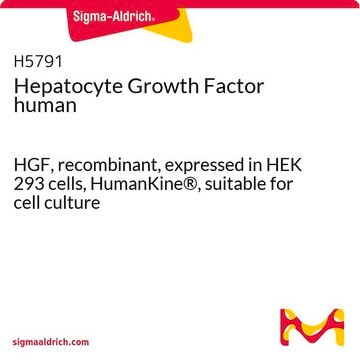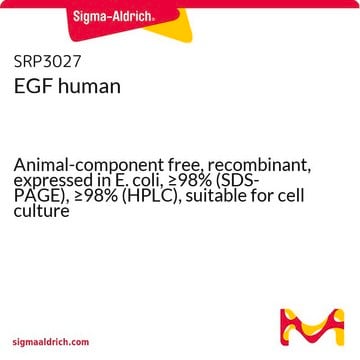G3046
GDF-15
Sinonimo/i:
Growth Differentiation Factor 15, MIC-1, Macrophage inhibitory cyotkine-1
Scegli un formato
Scegli un formato
About This Item
Prodotti consigliati
Origine biologica
human
Livello qualitativo
Ricombinante
expressed in CHO cells
Saggio
>97% (visualized with silver stain, SDS-PAGE)
Stato
lyophilized powder
PM
dimer 13 kDa (based on N-terminal sequencing, starting at the first histidine of the 6X histidine tag)
tecniche
cell culture | mammalian: suitable
Impurezze
endotoxin, tested
N° accesso UniProt
Temperatura di conservazione
−20°C
Informazioni sul gene
human ... GDF15(9518)
Descrizione generale
Applicazioni
Azioni biochim/fisiol
It has been discussed to serve as a secreted biomarker for activation of the p53 pathway in human cancer.[1]
Stato fisico
Risultati analitici
Codice della classe di stoccaggio
11 - Combustible Solids
Classe di pericolosità dell'acqua (WGK)
WGK 3
Punto d’infiammabilità (°F)
Not applicable
Punto d’infiammabilità (°C)
Not applicable
Scegli una delle versioni più recenti:
Possiedi già questo prodotto?
I documenti relativi ai prodotti acquistati recentemente sono disponibili nell’Archivio dei documenti.
Filtri attivi
Il team dei nostri ricercatori vanta grande esperienza in tutte le aree della ricerca quali Life Science, scienza dei materiali, sintesi chimica, cromatografia, discipline analitiche, ecc..
Contatta l'Assistenza Tecnica.








